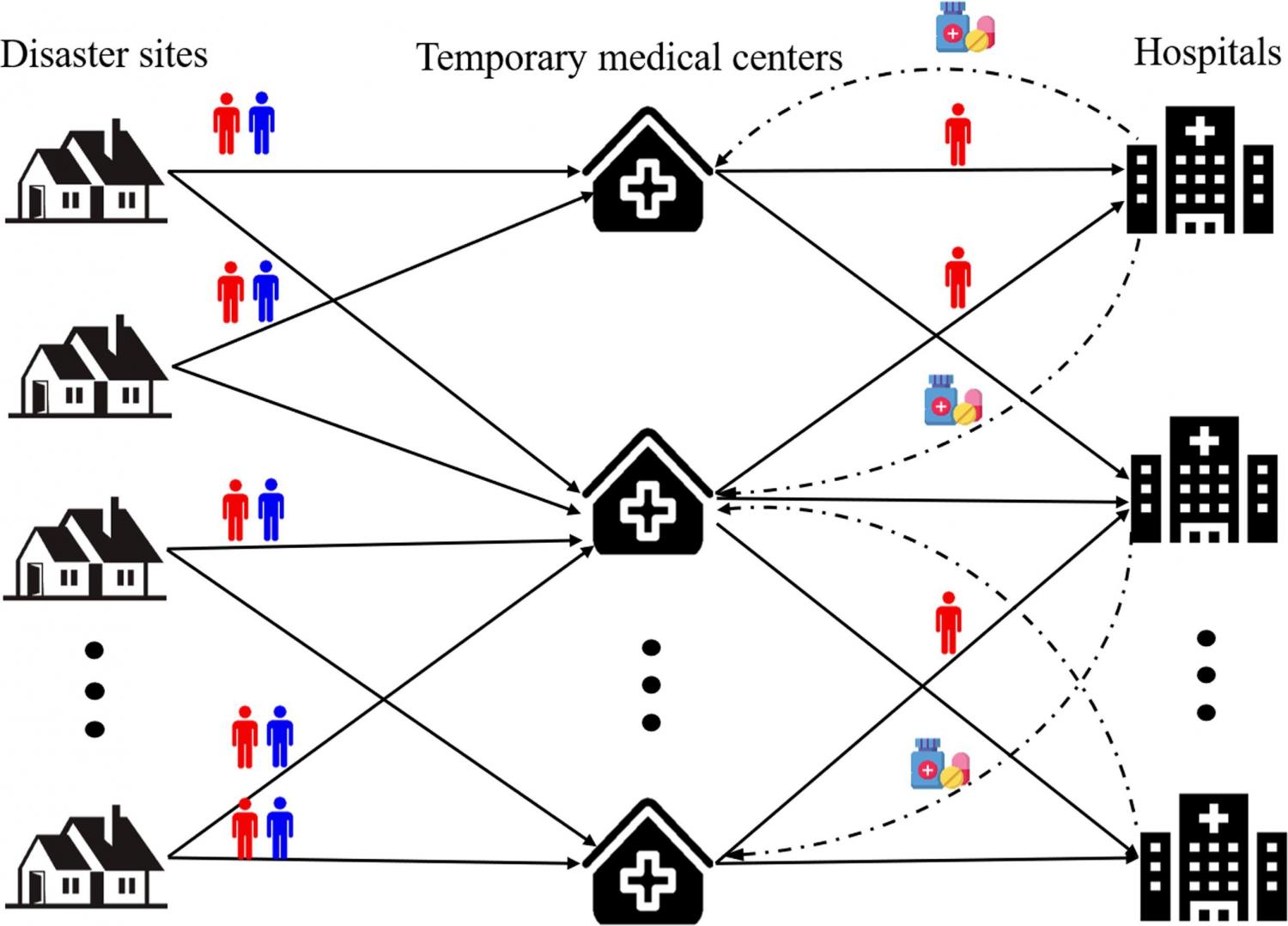
Elsevier, Transportation Research Part E: Logistics and Transportation Review, Volume 157, January 2022
Humanitarian aid in disasters is critical to saving lives and alleviating human suffering. This paper presents a novel scenario-based robust bi-objective optimization model that integrates medical facility location, casualty transportation, and relief commodity allocation considering triage. The proposed model aims to minimize the total deprivation cost of casualties due to the delayed access to medical services and the total operation cost. Following a set of disruption scenarios, the scenario-based robust approach is applied to protect solutions against the risk of disruptions in temporary medical centers. Considering the uncertain number of casualties under each scenario, the robust method which denotes the uncertainty as interval data is adopted. We utilize the ε-constraint method to deal with the bi-objective model. Additionally, we consider real case studies of the Wenchuan Earthquake to validate the proposed model. Several numerical experiments are conducted to examine the effects of uncertainties and capacities of medical facilities on the main objective value. The performance of considering the uncertainty and facility disruption is also discussed.
